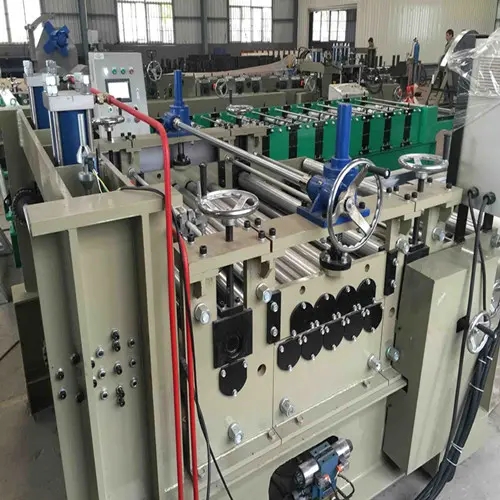
The Advantages of C and Z Purlin Roll Forming Machines
In the realm of modern construction and manufacturing, efficiency and precision are paramount. The demand for structural components that can meet both requirements has led to the widespread adoption of roll forming technology, particularly in the production of C and Z purlins. Purlins are crucial elements in various construction projects, serving as horizontal structural supports, and C and Z purlin roll forming machines stand at the forefront of this technological advancement.
Understanding C and Z Purlins
C and Z purlins are standardized steel sections that are predominantly used in the construction of roofs, walls, and frames. The key differentiator between the two lies in their shape C purlins have a C-shaped cross-section, while Z purlins feature a Z-shaped cross-section. Each design serves specific structural needs depending on the load requirements and building design. For example, Z purlins are often used in scenarios where a higher load capacity is necessary, while C purlins are preferred for lighter applications.
The Working Principle of Roll Forming Machines
Roll forming is a continuous bending process in which flat metal sheets are passed through a series of rollers. These rollers gradually shape the metal into a desired cross-sectional profile, enabling the production of long lengths of purlins efficiently. C and Z purlin roll forming machines are specifically designed to produce these profiles with high accuracy and minimal waste.
Typically, the process begins with a coil of raw steel, which is fed into the machine. As the material passes through the rollers, it undergoes a series of progressive bends until it achieves the final shape. Advanced control systems are often integrated into these machines to ensure precision in thickness, width, and height, allowing manufacturers to meet strict specifications.
Advantages of C and Z Purlin Roll Forming Machines

1. Efficiency and Speed One of the primary advantages of roll forming is its ability to produce long lengths of standard sections quickly. The continuous process minimizes downtime and allows for high-volume production, making it ideal for large construction projects.
2. Cost-Effectiveness By streamlining the manufacturing process, purlin roll forming machines significantly reduce labor costs and material waste. The ability to cut and shape the material only once it is formed ensures that manufacturers save money and resources.
3. Flexibility in Design C and Z purlin roll forming machines can be easily adjusted to create different profiles or dimensions. This flexibility allows manufacturers to produce custom lengths and thicknesses to meet specific project requirements without the need for extensive retooling.
4. High Precision The automated nature of roll forming provides exceptional accuracy in dimensions, which is crucial in construction applications. Precision reduces the need for post-manufacturing adjustments, further streamlining the assembly process.
5. Durability and Strength Purlins formed through this process are typically stronger than those made from other methods due to the properties of cold-formed steel. This strength enhances the structural integrity of the buildings and structures they support, ensuring longevity and safety.
6. Environmental Considerations Roll forming can significantly reduce material waste compared to traditional cutting methods. The process can be integrated with recycling systems, allowing for the reuse of scrap material, thus promoting sustainability.
Conclusion
C and Z purlin roll forming machines represent a significant advancement in the manufacturing of structural components for the construction industry. Their ability to produce high volumes of precise, cost-effective purlins makes them an invaluable asset for builders and manufacturers alike. As building projects become increasingly complex and demanding, the importance of efficient and innovative manufacturing technologies like roll forming cannot be overstated. With the ongoing advancements in automation and machine technology, C and Z purlin roll forming machines are poised to continue shaping the future of construction.